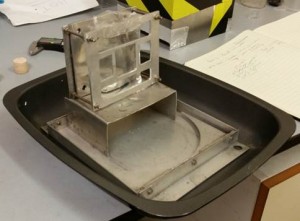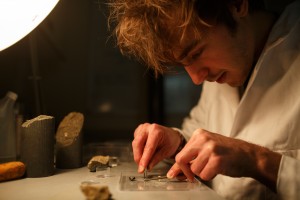Every so often with this blog we shall be looking at the ongoing work of one of the members of the Impact Group at the University of Kent.
First under the spot light is Jamie, a first year PhD Student who is about to start his second year but already has a lot of data and plans for his project.
Following on from the last post about the survivability of a projectile during high velocity impacts which is a subject currently not well represented in the literature, Jamie’s project is doing just that investigating the breakup of basalt projectile when impacted.
Aim of Research
The main aim of his research is to discover the state of survival of the basalt projectile at different impact speeds which lead to different levels of shock experienced by the projectile.
Why are projectile fragments important?
Projectile material has been recovered form 13 sites on earth and may form dark region on asteroids such as Vesta and non-indigenous material has been fund on the moon and recovered from inside meteorites. So there is clear evidence that the projectile can survive these real life impact and so understanding the break up and survivability of different types of impact material can help in our understanding of the development of the bodies in the Solar System.
Data collection method
He used the two stage light gas gun (see previous posts) to fire basalt cubes (hand filed by Jamie) at speed between 0.5 and 6.0 Km/s into a target of water.
This may not be a realistic impact but it provides the expected range of shock pressure for the projectile to experience.
The water is collected and filtered to extract the fragments of basalt projectile that have survived the impact. The fragments are measured and recorded using a Scanning electron microscope (SEM) which allows imaging of the micron sized particles of basalt.
Whats the big picture here?
A novel look into the survivability of basalt at high shock pressures to render the projectile survival percentage. This can be used to compare to the amount of projectile surviving impacting on different solar system bodies. Furthermore, a look into the evolution of cumulative fragment size distributions with increasing peak shock pressure.
Jamies work will soon be presented at the up coming Bridging the Gap conference in Frieberg, Germany.









